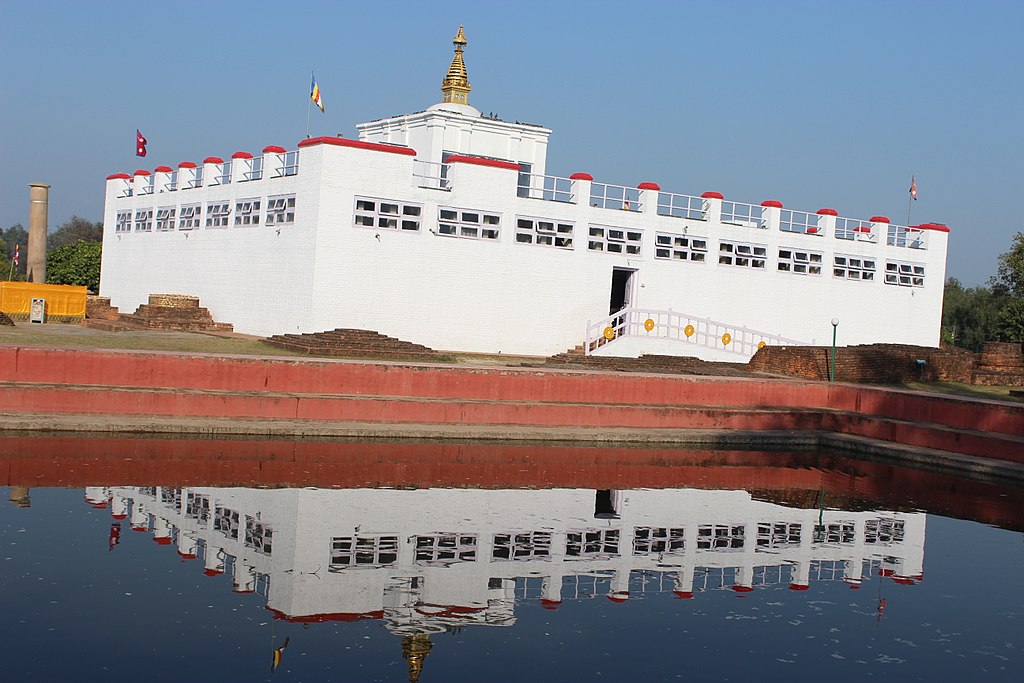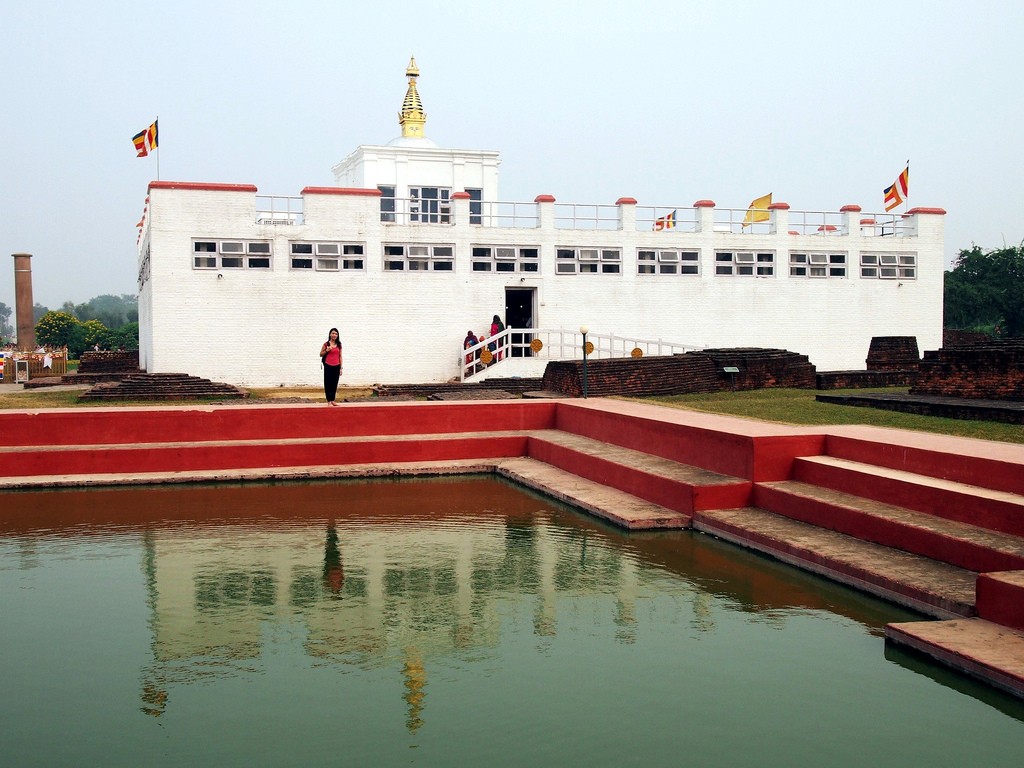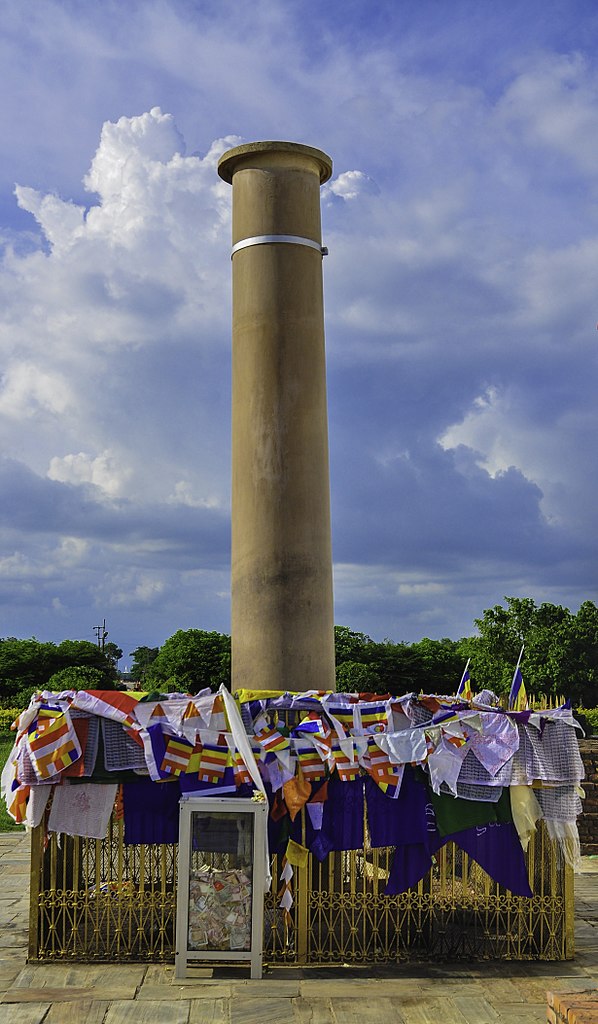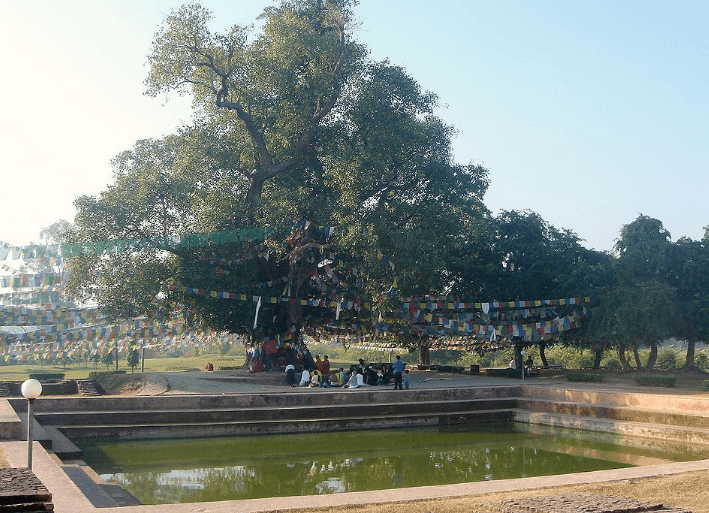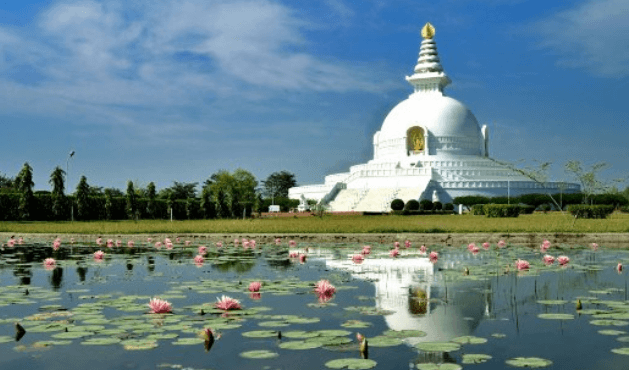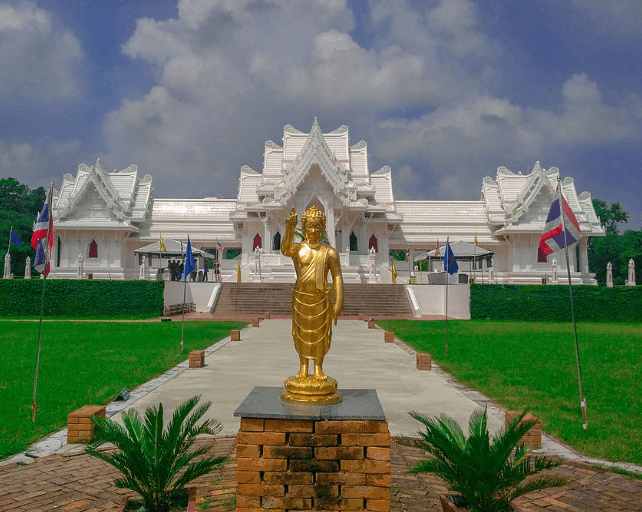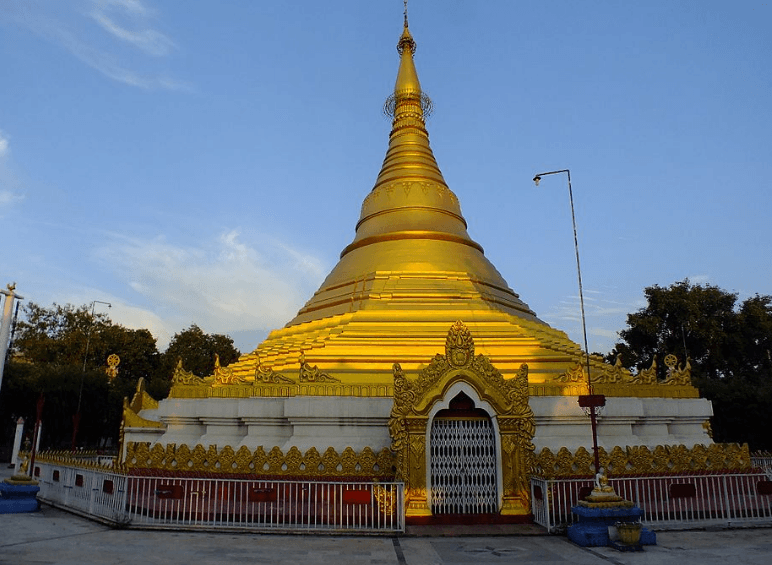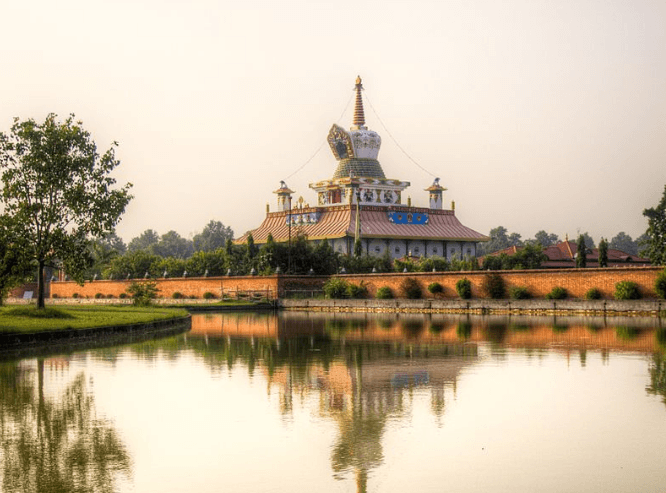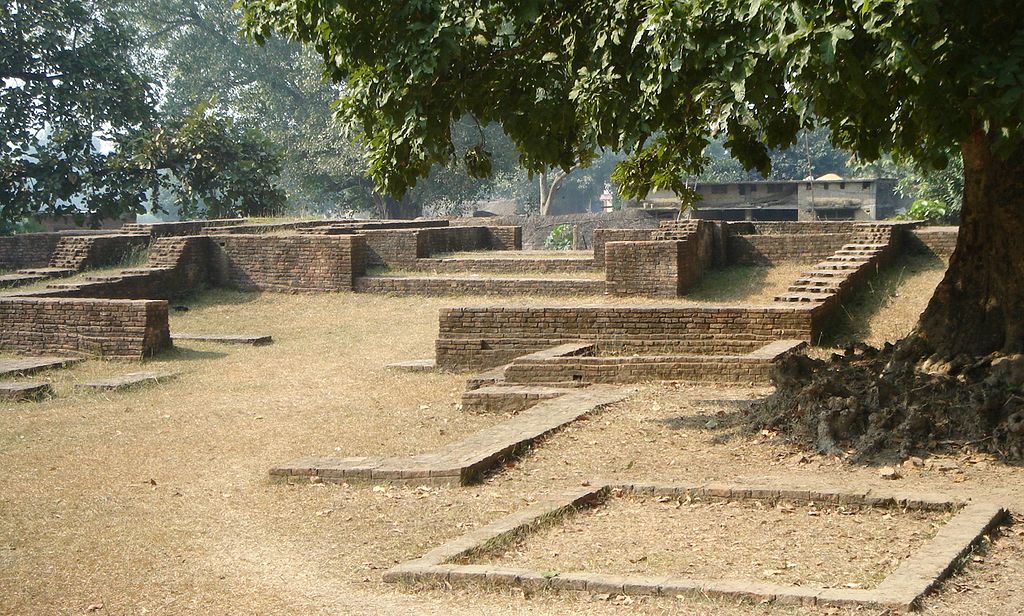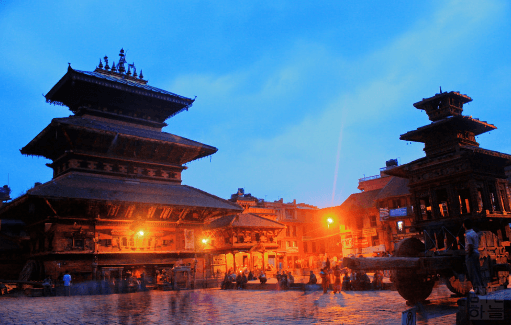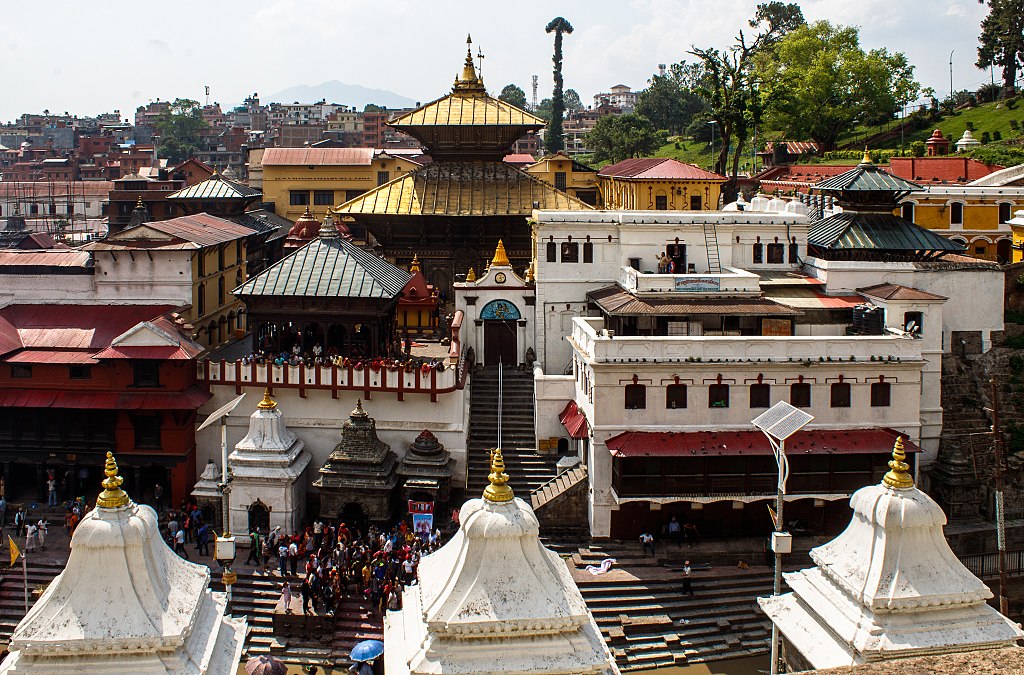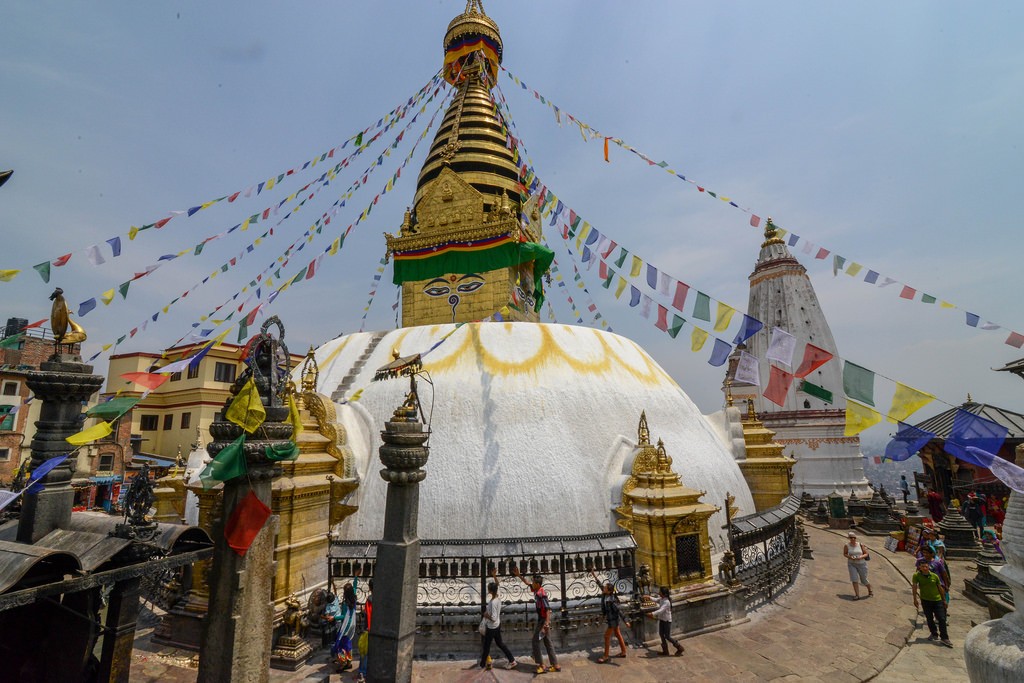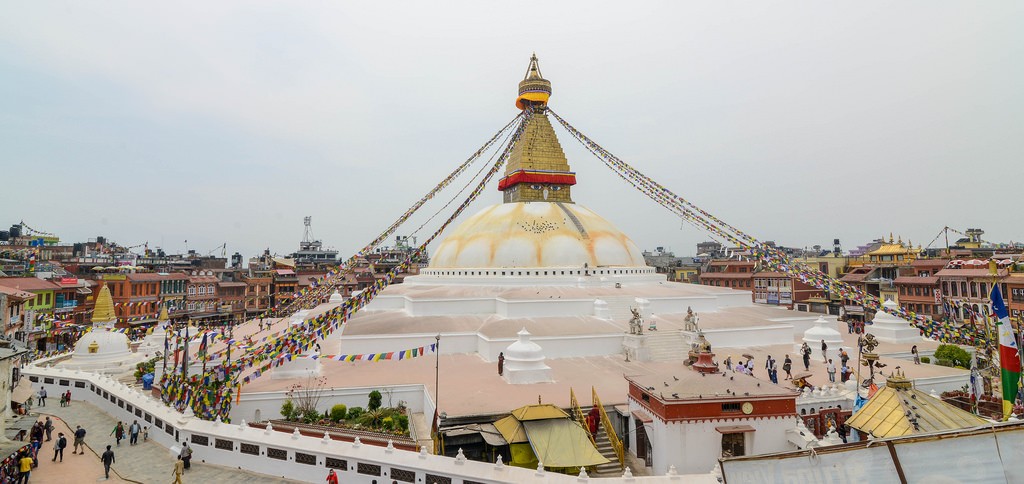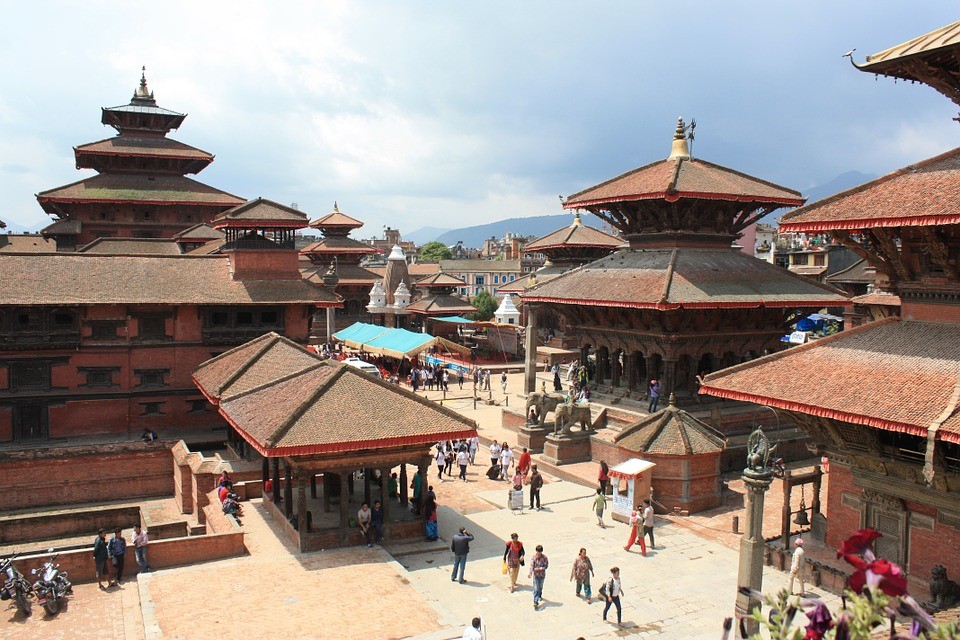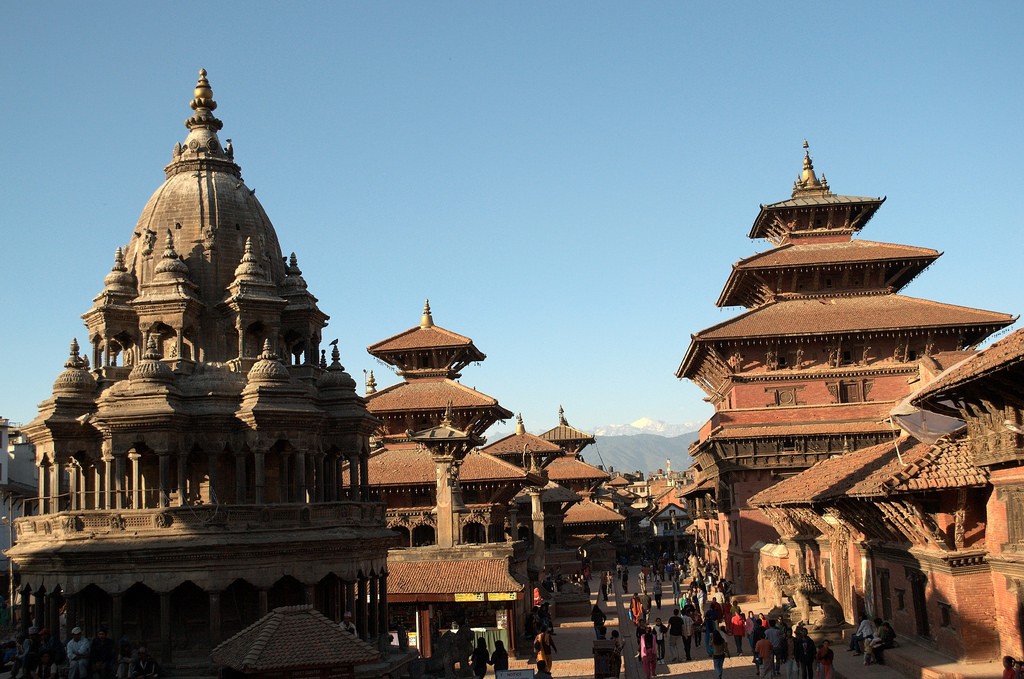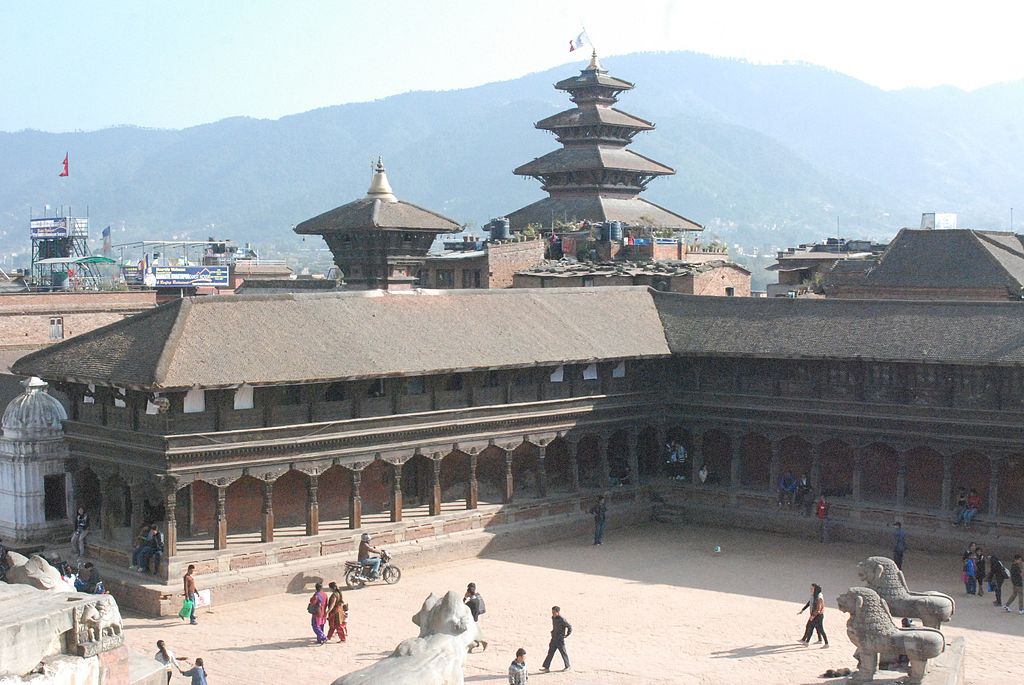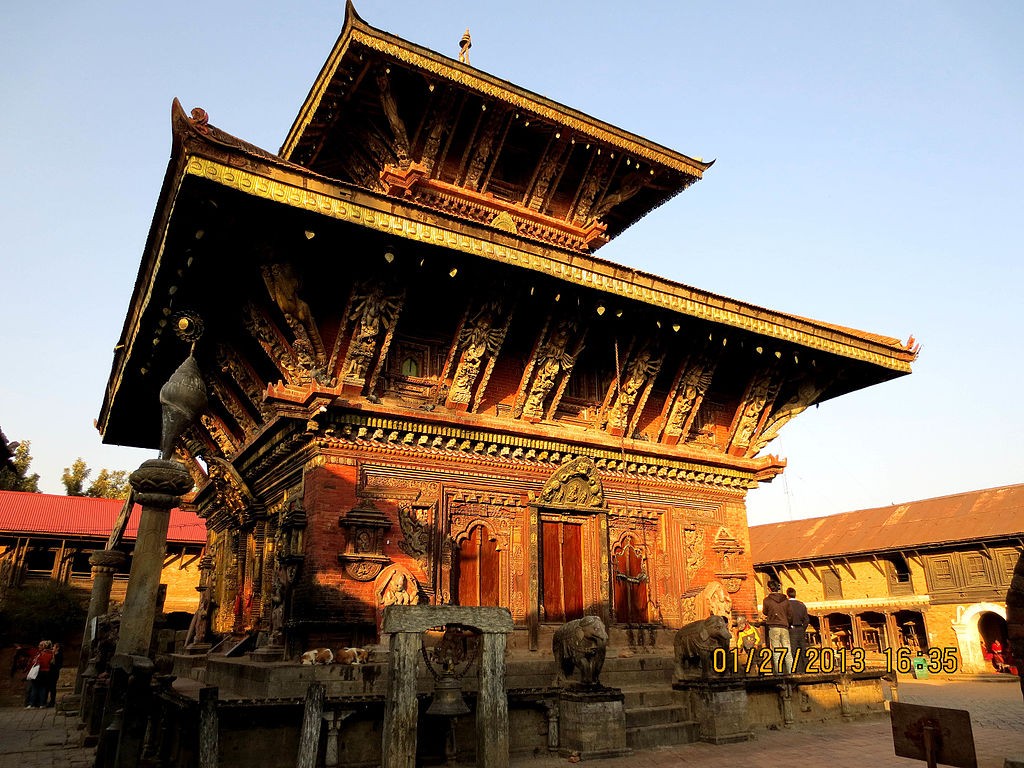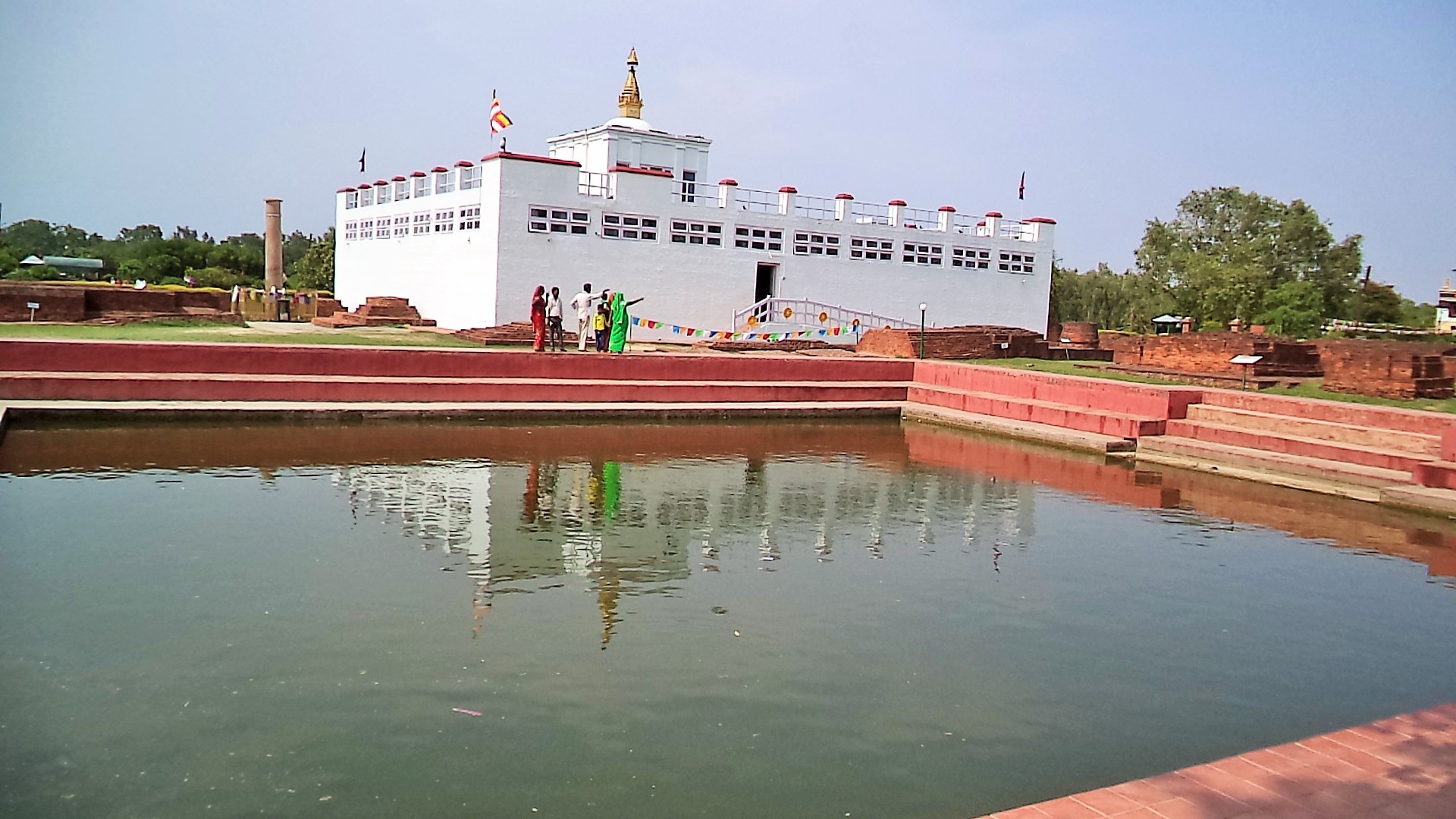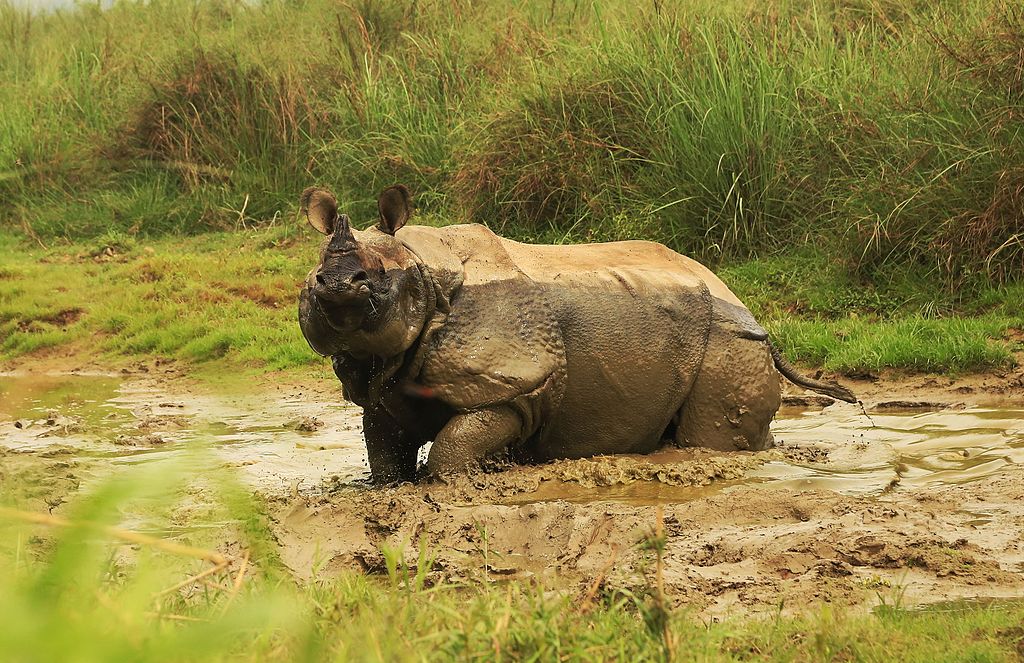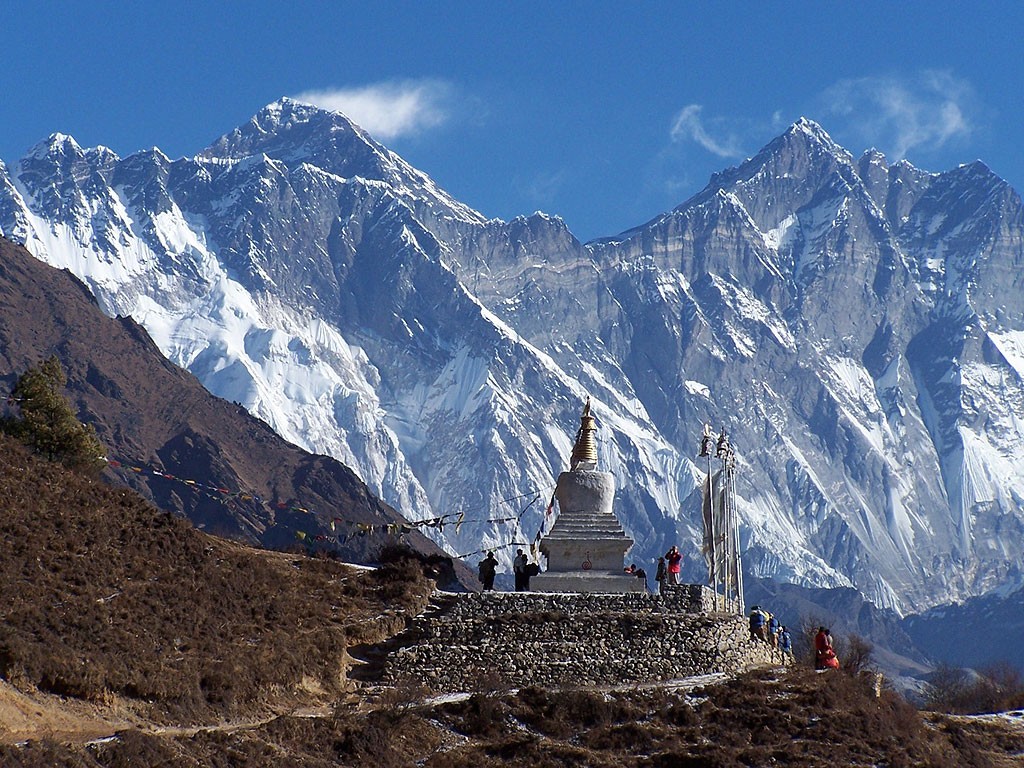Nepal is multicultural, multilingual and multi ethnicity nation where people are religious tolerance and peace-loving. In such a tranquil and beautiful country there lies Lumbini, where Siddhartha Gautam, the founder of Buddhism was born. Lumbini is in the plains of Terai, near to Indian border where Siddhartha Gautam (Gautam Buddha) was born. Lumbini is the pilgrimage site for devotees all around the world. If you are looking forward to a spiritual place to visit, Lumbini will be the best option for Lumbini provides an opportunity to witness the Birthplace of Gautam Buddha and the different stages of his life.
Lumbini means ‘the lovely’ in Sanskrit. Located in Kapilvastu district in Province no. 5, Lumbini is 25 kilometers away from Kapilvastu municipality. Lumbini nestled in the Terai belt of Nepal so it is only 20 kilometers away from India. Lumbini in total covers the area of 4.8 km long and 1.6 km width and divided into the two monastic zones with full of the monasteries where nothing like shops can be opened. A long canal filled with the water separates these two zones. The western monastic zone of the area consists of the Mahayana and Vajravana monasteries and the eastern zone of the area consists of the Thervadin monasteries. The water filled canal served with motorboats that offer tours for the visitors.
The Lumbini encompasses many temples and monasteries. There are more than 25 international monasteries built by the Buddhist countries from all around the world. Lumbini is famous worldwide for these monasteries as well as Mayadevi Temple, the Ashoka pillar, the ancient bathing pond and Bodhi tree. UNESCO listed Lumbini in a World Heritage Site due to the historical, cultural and religious importance it carries.
History of Lumbini
According to Buddhist tradition, Maya Devi was traveling to her parent’s home from her home in Kapilvastu in 642 BC. But suddenly, she went through labor and grabbed the branches of a tree and gave birth to Siddhartha Gautam. It is believed that the baby uttered: “it’s my final rebirth” and took seven steps as soon as he was born. For every step, he took immediately after his birth a lotus bloomed. Later, Siddhartha Gautam received enlightenment, became Buddha and founded Buddhism.
In 246 BC, Emperor Ashoka built four stupas and stone pillar during his visit to Lumbini. Many monasteries were built until the 9th century. However, Buddhism declined after Islam and Hinduism arose and the sacred garden was lost for many years. A German archaeologist rediscovered the site in 1985.
Many Buddhists, as well as Hindus, visit the place every year to explore Buddhism as well as feel the peace in Nepal. Not only for Buddhist, Lumbini is also a holy place for the followers of Hinduism because they believe Gautam Buddha as another form of Lord Vishnu.
Know More About the Light of Asia
How to reach the Lumbini
If you are traveling to Lumbini from the capital, Kathmandu, you can choose either by air or land. Nepal Sanctuary Treks arrange and prepare tailor-made Lumbini Circuit Tour as per your requirement.
By flight: The flight departs from Kathmandu Domestic airport and take about 40 minutes to reach Bhairahawa airport which is the nearest airport to Lumbini. Further it will take about 30 more minutes to reach Lumbini by vehicle.
By Driving: If you prefer to travel by road then Nepal Sanctuary Treks arrange private vehicle or bus to Lumbini. It is a long journey of about 8 hours. But, if you enjoy having a look at the rural life of Nepal, this will be a good choice.
Best time to visit Lumbini
Located in the south of Nepal, Lumbini experiences a subtropical monsoon climate. May and June are the hottest months. There occurs frequent rainfall during June to August and occasionally up to the end of the September. Climate during December to January is warm with the average temperature of 20°C which can sometimes fall to 8-10°C. It is a good time to visit Lumbini during October and November. The climate is favorable during this time of the year. Also, you can see many flowers around the temples that create serene and beautiful environment.Likewise, April and May is also an ideal time to visit Lumbini. The Buddha Jayanti, falls during these months where devotes celebrate grandly. Many pilgrims come to celebrate this festival during this time.
Major Attractions in Lumbini
There is no place perfect than Lumbini if you are looking for a place of cultural, archeological and religious importance. A tour to Lumbini is a walk with Gautam Buddha, one of the greatest men in the religious world, in a peaceful environment is what makes your soul happy. Here are the places to visit in the Lumbini trip:
Maya Devi Temple
The Maya Devi temple is one of the major attractions of Lumbini. The temple built in honor of Maya Devi, the mother of Gautam Buddha. The white colored temple is in a simple design, and the surrounding of the temple is perfect for morning meditation. The Maya Devi temple preserves the history of the mother of Gautam Buddha. According to Buddhism, Maya Devi gave birth to Gautam Buddha under a Banyan tree, and this temple stands exactly at the site of the tree. Thus being the exact spot where Buddha was born. There is a Bodhi tree nearby the temple where Maya Devi rested during her labor. Some pilgrims make their prayers sitting under the Bodhi tree.
Ashoka Pillar
Ashoka pillar is an inscribed pillar made with stones. Emperor Ashoka (the greatest king of India) built the Ashoka pillar in 246 BC along with four other stupas. The inscription on the surface of the pillar says that Lumbini is a tax-free-zone. Till date, there are 19 Indian pillars with inscription. Most of them are found in India, but the Ashoka Pillar in Lumbini the oldest one.
Puskarni Pond
Towards the south of the Ashoka pillar is a pond called Puskarni pond. Buddhist believes that Maya Devi took a bath in the pond before giving birth to Siddhartha Gautam. The baby Gautam Buddha was also had his purification bath in the very pond as soon as his birth. Nowadays, the devotees take a holy dip in the pond. In the surrounding of the pond, there are the remains of the brick pagodas and monasteries that present a view of the 2nd century BC and 9th century AD.
Sacred Garden
The Sacred Garden of Lumbini is popular as the birthplace of Gautam Buddha. It is the family home of the mother of Gautam Buddha. A visit to this site will help you explore how Buddha’s mother returned home, how Buddha was born and grew up.
Want to Visit the Holy Lumbini Circuit?
World Peace Pagoda
The world peace pagoda is one of the world’s greatest stupa situated outside the major compound of Lumbini and is easily accessible by bikes. The beautiful pagoda is white and demonstrates the golden statue of Gautam Buddha in a posture during the time of his birth. The Japanese Buddhist built the Peace Pagoda at the cost of one million US dollars. At the bottom of the stupa, there is a grave of a Japanese monk murdered by an anti-Buddhist during the pagoda construction.
Royal Thai Buddhist Monastery
The Royal Thai Monastery is a huge and marvelous piece of architecture in Lumbini. The large monastery lies in the north end of the pond made up of white marvels. The large white monastery standing against the blue sky is something one cannot take their eyes off. The blue-roofed meditation center is another masterpiece of art.
Myanmar Golden Temple
The Myanmar Golden Temple is one of the oldest structures in Lumbini. There are three prayer halls inside the temple. The Myanmar Pagoda Temple also consists of the Lukmani Pula Pagoda temple and another Burmese style pagoda similar to the Shwedagon pagoda in Yangon.
Lumbini Museum
The beautiful Lumbini Museum lies in the northern end of the Lumbini area. The museum preserves the pictures and artifacts of Buddhist sites not only from Nepal but also from the place all around the globe.
The Great Lotus Stupa
The German Tara Foundation built The Great Lotus Stupa. Along with the fantastic structure, it is mainly important because of the religious values it carries within itself. The measurements for the construction of the stupa is according to the year’s old rules at the time of Gautam Buddha. In the center of the stupa, there lies a meditation hall of diameter 20 meters.
Dharma Swami Maharaja Buddha Bihar
The beautiful Dharma Swami Maharaja Buddha Bihar is in Tibetan style. It lies outside the main Lumbini area. Every day 60 monks who live there do a Tara Puja in the Bihar. The art and color in the walls of the Bihar depict the Buddhist art.
Zong Hua Chinese Buddhist Monastery or the China Temple
The China Temple is a beautiful and eye-catching pagoda style temple. The calm environment around the temple gives every visitor with the sense of an ancient, peaceful city.
Excited to Explore the Birthplace of Gautam Buddha? Wait No More
Kudan
Kudan is a beautiful place to visit in Lumbini. It has huge mound of the structural ruins situated 4.5 km south of Tilaurakot. This was the place where King Suddhodhana met Lord Buddha for the first time after he returned from cosmic enlightenment. There are even a small pond close to Kudan Stupa where you can acquire a great deal about Lord Buddha.
Gotihawa
Gotihawa is believed to be the birthplace of the past Buddha Krakucchanda, who came before Shakyamuni Buddha. It is situated about 5 km. southwest of Taulihawa which has Asoka pillar standing on a slab. Adjoining the pillar towards its northeast is a huge stupa made by wedge-shaped Mauryan bricks.
Tilaurakot
Tilaurakot, is well-known for the archaeological remains of ancient Shakya Kingdom and the childhood home of Prince Siddhartha Gautama. It is located 27 km west of Lumbini where there are ruins and mounds of ancient stupas and monasteries made of kiln burnt bricks and clay mortar. A moat surrounded the remains and the wall of the city is made up of bricks.
Niglihawa
Niglihawa is a significant archaeological site situated about 8 km northwest of Taulihawa. The site consists quadrangular pond locally known as Niglisagar On the western bank of the pond there are two broken pieces of the Asoka pillar built by Emperor Ashoka during his pilgrimage. The pillar is 15 meter tall that bears two peacocks.
Sagarhawa
Located about 12 km north of Taulihawa, Sagarhawa is the forest site where there is a large rectangular pond locally known as Lumbusagar or long pong in Niglihawa village. The ruins of an ancient tank were excavated and identified by Dr. Alois A. Fuhere as the “Palace of the Massacre of the Shakyas”.
Devadaha
Devdaha is the ancient capital of Koliya kingdom located 38 km east of Lumbini near the village of Khairhani. Devdaha is a maternal home of Mayadevi, mother of Gautama Siddhartha and the place where Siddhartha spent his early childhood. It is a place where Lord Buddha visited Devdaha after seven years of his enlightenment.
There are several place of interests around Devdaha for instance Kumarbarti, Khayardanda, Bairimai/Kanyamai, Bhabanipur/Devidamar, Mathagadi (ancient weapons).
The Ramgram Kingdom
Ramagram kingdom was one of eight Kings who obtained Buddha’s relics and built a pagoda named Ramgram Pagoda situated 60 kilometers to the east of the sacred sites of the Buddha’s birthplace. Ramagram is a brick mound on the bank of the Jharahi River which is 7 meters high brick stupa comprising one of the eight Astha Dhatu (relics) of Lord Buddha.
Meditation Class
Everyone on 21st century have hectic schedule and seek for inner peace during their weekends or holidays. Lumbini is an ideal place for meditation that helps to unwind at least a while from every day’s life. While you are in Lumbini, you can join meditation class organized during full moon day inside the premises.

